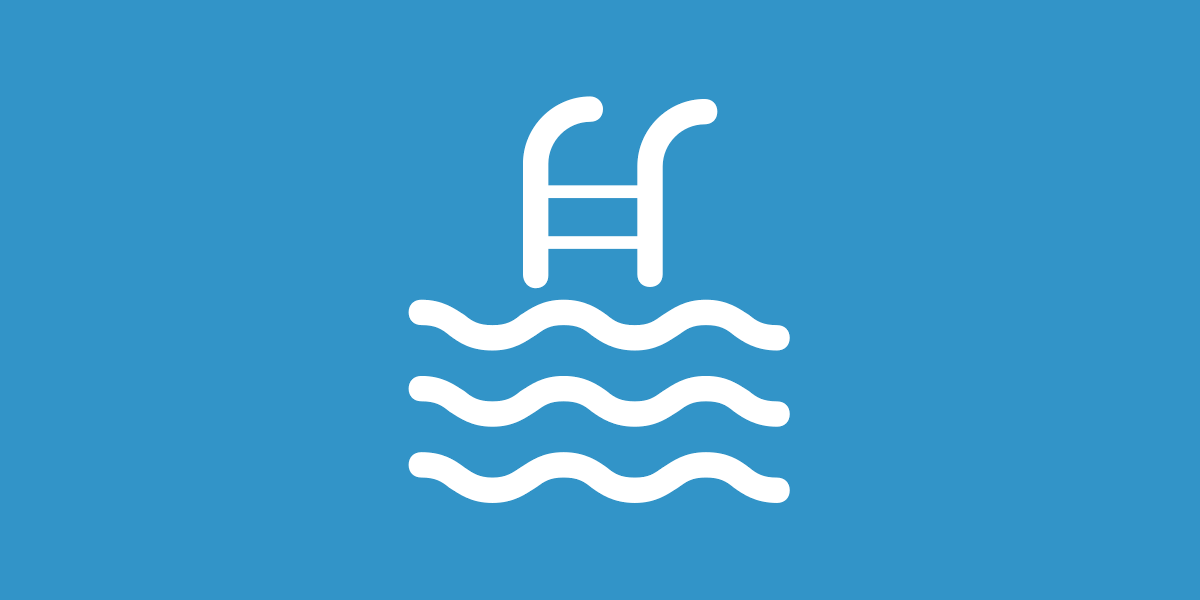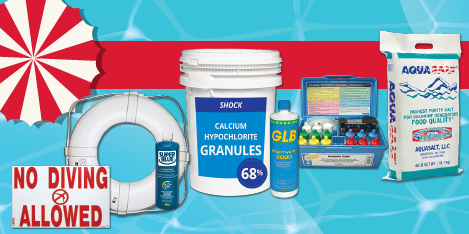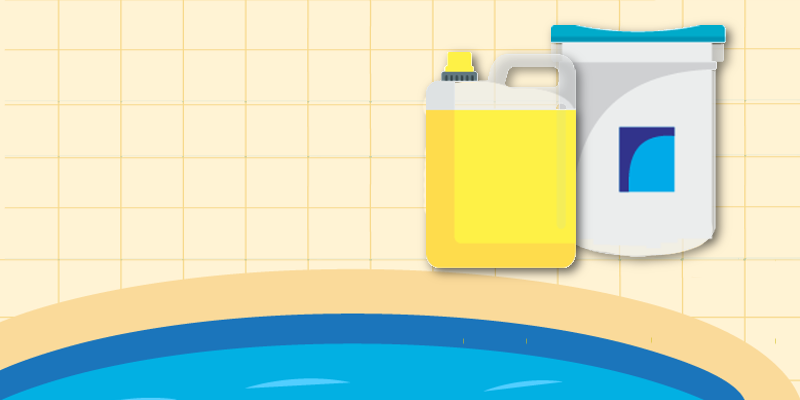The Trichlor Shortage May be a Good Thing
The Trichlor chlorine shortage started as a disaster. Damage from a literal natural disaster, Hurricane Laura, started a fire that destroyed the Trichlor plant in Louisiana in 2020. But for your property’s pool and your bottom line, the temporary shortage forcing the use of alternatives to Trichlor may ultimately be a blessing. The Trichlor you have been using may unknowingly be creating a problem for your pool, so this is the perfect opportunity to make a change.
What Products Are Affected?
All of the Trichlor and Dichlor products that Chadwell Supply carries are affected. While production has resumed in a very limited capacity, availability is challenging. We are working closely with our suppliers and endeavor to maintain a steady stock of at least one of the Trichlor options through the 2021 pool season. However, stock will be limited, is not guaranteed and purchase limits may also be imposed.

What are the Alternatives?
If Trichlor is unavailable in your area when you need it, there are several alternatives for sanitizer:
- Dichlor is an alternative to Trichlor but it is very expensive and production has been halted for the remainder of the 2021 season.
- Liquid chlorine is a cost-effective alternative but maintaining the pool will require large amounts of liquid chlorine and constant maintenance. Jugs of liquid chlorine take up more space than you probably have in your equipment room. Also, liquid chlorine does not have a stabilizer component so it breaks down quickly and becomes less effective the longer it sits in a bottle—especially in a hot shop or storage area. While it may be a low-cost way to go, be prepared to buy large quantities often.
- Calcium Hypochlorite or “Cal-Hypo” does not have the stabilizer component so it also requires daily maintenance and monitoring. However, it is packaged in either a concentrated granular form or a tablet that can be used in a Cal-Hypo feeder. These cost-effective, concentrated forms make it easier to store and work with than liquid chlorine.

The Pit Falls of Trichlor
Before we were forced to think about the availability of Trichlor; it was the easy solution. You may have been using Trichlor for years with no thought to change from this cheap, easy routine. What you likely may not have realized is your pool is likely stuck in a vicious cycle. You may be damaging your property’s pool and using more chemicals than necessary to sanitize the water:
- The use of Trichlor depletes the water of calcium. Without sufficient calcium in the water, the pool will begin to pull calcium from the sides and surfaces of your pool. You will begin to see etching and erosion of the pool surface.
- The stabilizer used in Trichlor to keep the chlorine from dissipating does not dissipate over time. Instead, it builds up in the form of cyanuric acid and causes the chlorine to be less effective. This results in the need to use more chlorine to achieve optimal results.
Why is the Shortage a Blessing?
The limited availability of Trichlor this pool season is a great opportunity to reset and save multifamily pools from inevitable damage. Consider switching to Cal-Hypo as a detox for your pool.
- If you have been a long-time Trichlor user, there is a good chance the cyanuric acid levels in your pool are high enough to keep your sanitizer from evaporating and get you through the season without adding additional stabilizer. Using Cal-Hypo will start to help decrease the cyanuric acid levels.
- Another benefit is that the water will start to receive the calcium it is lacking.


What Do You Need to Know to Use Cal-Hypo?
As a general rule, do not add anything to your pool without testing the water first to determine what is needed. You can’t measure what you don’t test!
If sanitizer is needed, when using granular Cal-Hypo, dissolve it in a little bit of pool water and then add it to the pool. Alternatively, you can manually distribute (broadcast spread) the Cal-Hypo around the sides of the pool.
If your pool system uses a DE filter and you’d like a long-term solution, a Cal-Hypo feeder can be installed as part of your system.
What You Need to Do Everyday
- Test the water daily (or more, as needed) (#362014)
- Chlorine
- pH
- Alkalinity
- Calcium (test every two weeks or at least monthly)
- Cyanuric Acid (test weekly)
- Mix Cal-Hypo with a small amount of pool water in a bucket. Always add chemicals to water, never water to chemicals!
- Add Cal-Hypo solution (and other chemicals as needed) to the pool
- Wait for the water to cycle and retest.*
* Note that stabilizer does not register in your test using Reagent #13 for three to five days after it is added to the pool. Retest after a few days. Do not be too quick to add more stabilizer.


Our Long-Term Recommendation
The production of Trichlor should eventually return to normal and stock availability will no longer be an issue. However, once you have taken advantage of these months to bring your pool back into balance, consider a rotating schedule of Trichlor and Cal-Hypo.
Many multifamily properties have found the ease of Trichlor to be a benefit during a busy pool season but take advantage of the cooler fall and winter season, when the pool is not in use, to take a break from the constant addition of cyanuric acid and use Cal-Hypo for those months to help maintain proper water chemistry.
For more information about the upkeep of your pool here.
Find out how you can earn your Certified Pool Operator (CPO) designation with Chadwell University.

1 Many state and local codes are starting to take note to the increases in cyanuric acid and will close pools in excess of 100ppm. Moving to Cal-Hypo can help these levels return to acceptable 30-50ppm.
2 Verify with your local and State Health Department regulations whether manual distribution is allowed and how long after adding Cal-Hypo you must wait to open the pool.
3 Cal-Hypo feeders cannot be installed on sand filter systems.
4 Stabilizer does not register for three to five days after it is added to the pool. Retest after a few days. Do not be too quick to add more stabilizer.



 GRANULAR DICHLOR CHLORINE - 25 LB.
GRANULAR DICHLOR CHLORINE - 25 LB.
 TRICHLOR CHLORINE STICKS - 50 LB.
TRICHLOR CHLORINE STICKS - 50 LB.
 CALCIUM HYPOCHLORITE POOL CHLORINE - 68% 100 LB
CALCIUM HYPOCHLORITE POOL CHLORINE - 68% 100 LB
 CALCIUM HYPOCHLORITE POOL CHLORINE 47%- 90 LB
CALCIUM HYPOCHLORITE POOL CHLORINE 47%- 90 LB
 A300 ROUND CAL-HYPO TABLETS- 50 LB.
A300 ROUND CAL-HYPO TABLETS- 50 LB.



